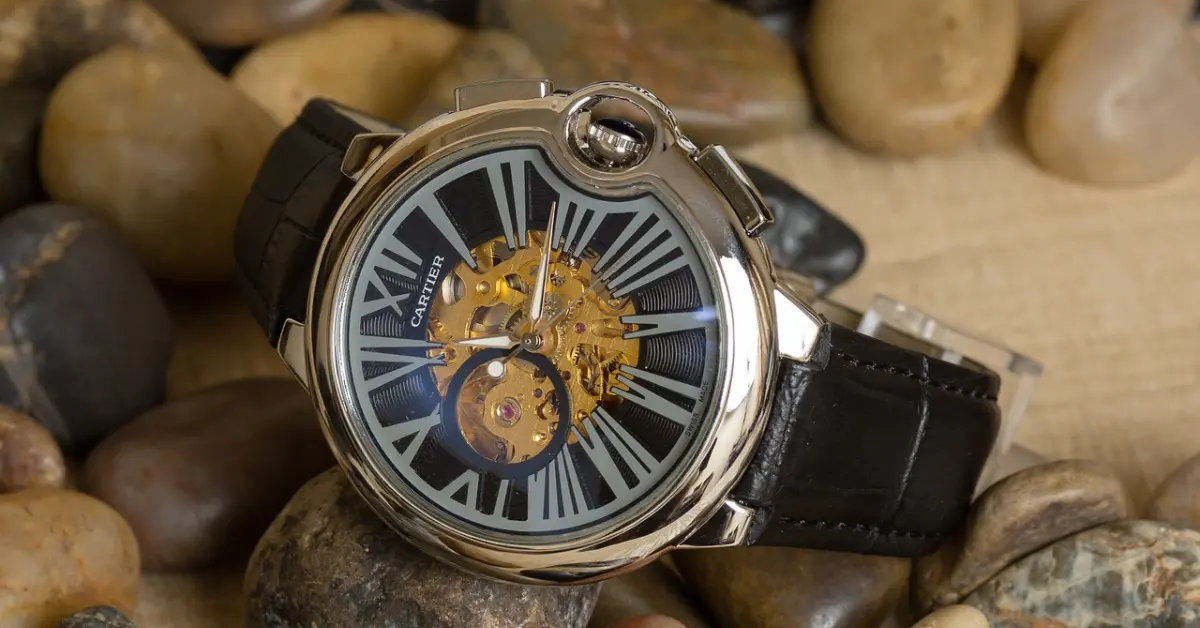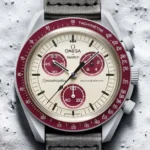Skeleton watch brands capture the intricate beauty of watchmaking by stripping down the dial to reveal the mesmerizing mechanics underneath. This design showcases the gears, springs, and inner workings that are typically hidden away, turning the watch into a transparent piece of art. We appreciate these timepieces not just for their functionality, but also for the craftsmanship and engineering prowess they exhibit, making them a statement piece for enthusiasts and casual wearers alike.
Evolution of Skeleton Watches
In our journey through timekeeping history, we witness the remarkable transformation of the skeleton watch as it weaves together tradition and technological innovation to create a horological art form.
History and Tradition
The skeleton watch has its roots deeply planted in the tradition of 18th century watchmaking. It was during this time that artisans began the meticulous process of skeletonization, where excess material of the watch movement is removed, revealing the inner workings. This practice showcased not only the watch’s intricate mechanics but also the high level of craftsmanship required during an era when precision tools were limited.
Historically significant brands have shaped the skeleton watch landscape, drawing on centuries of horological expertise. Based on the concept of accentuating a watch’s functional beauty, skeleton watches became a canvas showcasing the artistry and skill of master watchmakers.
Horological Significance
Skeleton watches serve as more than mere timekeepers; they are viewed as masterpieces that exhibit the beauty of horology. Each component is elegantly displayed, allowing us to appreciate the cohesive dance of gears often hidden away. They remind us that time is a complex, shared experience, and by exposing the intricacies of their mechanical movements, these watches celebrate the perpetual ingenuity of horological design.
Advancements in Watchmaking
As we navigate through the passages of time, advancements in watchmaking are readily apparent in the evolution of the skeleton watch. Modern techniques and materials, such as laser cutting and sapphire crystal, have propelled the art of skeletonization into new realms of precision and creativity.
Advanced computer-aided design programs enable the crafting of components with exceptional accuracy, resulting in watches that are both robust and visually stunning. Such progress nurtures the harmonious blend between traditional craftsmanship and cutting-edge technology, leading to ever more intricate and compelling designs that push the boundaries of what is possible within the revered practice of skeleton watch creation.
Technical Aspects of Skeleton Watches

In our exploration of technical aspects of skeleton watches, we focus on the movement and complications that distinguish these timepieces, the materials that grant them durability, and pioneering movement technologies that reflect horological progress.
Understanding Movement and Complications
Skeleton watches reveal the intricacy of mechanical movements, often showcasing the gear train and the delicate interplay between each component. As we observe the caliber 240 sq—a notable example—we’re afforded a view into a refined open-worked design that enhances the watch’s aesthetic and technological appeal. Complications add functional value and complexity, ranging from simple date displays to more elaborate chronographs and moon phases, allowing us to appreciate both the functionality and the mechanical artistry within.
Materials and Durability
The choice of materials in a skeleton watch is critical for both its appearance and longevity. Sapphire crystal is frequently employed for its resistance to scratches, offering a clear window into the watch’s internal wonders. For the case, titanium is prized for its strength-to-weight ratio, making titanium cases highly durable without adding excess heft, rendering the watch both sturdy and comfortable.
Innovations in Movement Technology
In the realm of innovation, skeleton watches are at the forefront with automatic movements that capitalize on advancements in efficiency and precision. The engraving and skeletonizing of the movement, while aesthetically appealing, are also reflective of the brand’s strides in horological engineering. This is exemplified in the development of ultra-thin movement technology, that not only reduces the profile of the timepiece but also contributes to the elegance that skeleton watches are known for.
Iconic Skeleton Watch Brands and Models

When we explore the realm of skeleton watches, we discover a tableau where meticulous craftsmanship meets transparent beauty. Our journey through the iconic skeleton watch brands and models unveils timepieces that transcend mere functionality to become wearable art.
Luxury Segment Leaders
In the echelons of luxury timekeeping, skeleton watches represent a pinnacle of horological achievement. Our observations begin with Patek Philippe, a brand synonymous with precision and exclusivity. The Patek Philippe Complications 18k Rose Gold Skeleton Watch is a prime example of the brand’s artistry, showcasing the delicate inner workings through a sapphire-crystal case back.
Not to be outdone, the Audemars Piguet Royal Oak Double Balance Wheel Openworked epitomizes the brand’s expertise in producing aesthetically pleasing, mechanically complex watches. The interplay of light across its intricately cut layers is simply mesmerizing.
In the realms of tactical performance and bold design, Richard Mille never ceases to amaze with their high-tech approach. Renowned for their avant-garde style and use of cutting-edge materials, Richard Mille’s watches resemble miniature displays of engineering marvel.
Concurrently, Omega houses classics like the Omega Speedmaster Skeleton, distinguished by its historic design elements intermingled with a see-through dial that exposes the movement in full glory.
The Piaget Polo Skeleton, with its slim profile and open-worked dial, demonstrates Piaget’s mastery over ultra-thin calibers, maintaining elegance without sacrificing functionality.
Accessible Options for Enthusiasts
For aficionados seeking accessible options without compromising on the skeleton motif, several brands offer noteworthy models. Tissot’s Chemin des Tourelles Squelette balances affordability with the sophistication of skeletonized dials, allowing wearers to appreciate the inner mechanics without a lavish expenditure.
In the same vein, Hamilton’s Jazzmaster series includes models such as the Hamilton Jazzmaster Viewmatic Skeleton, which allow a glimpse into the precise automatic movement, combining modern design with traditional watchmaking techniques.
For those captivated by the skeleton style but are budget-conscious, Stuhrling and Invicta watches provide well-crafted designs that reveal their inner workings without breaking the bank. They stand as testaments to the accessibility of the skeleton aesthetic in modern horology.
Orient, a brand respected for providing high-quality, affordable watches, also has skeleton watches in its collection, delivering Japanese precision with a distinctive look.
Bulova and Oris, while varying greatly in price and style, each offer their own unique take on skeleton watches, making them appealing to a broad audience of timepiece enthusiasts.
Design and Aesthetics of Skeleton Watches
Skeleton watches captivate with their intricate display of mechanical artistry, inviting us to admire the finesse of watchmaking through their transparent designs. The aesthetic appeal of these timepieces lies not only in their visible inner workings but also in the exceptional decorative finishes applied to each component.
Artistic Finishing and Engraving
The allure of skeleton watches often originates from their artistic finishing and engraving. Master watchmakers utilize techniques such as côtes de Genève to create a distinctive striped pattern on the movement’s parts, enhancing the timepiece’s visual appeal and sophistication. Engraving adds another layer of craftsmanship, with meticulous details carved directly onto the movement or case, making each watch a unique work of art.
Legibility and Practicality
Despite their beauty, skeleton watches face the challenge of maintaining legibility while showcasing the movement’s architecture. Designers carefully balance the openwork framework with the functional aspects of the watch. Often, elements like Roman numerals are utilized to offer a clear time indication without overpowering the design. Yet, the issue of legibility remains polarizing; while some collectors cherish the complex artistry, others favor a more practical dial layout.
Modern vs. Classic Styles
Skeleton watches present a varied palette, with modern versus classic styles defining the spectrum of designs. Classic styles tend to preserve traditional watch aesthetics, employing Roman numerals and more discrete engraving. In contrast, fully skeletonized watches reflect modernity, pushing the boundaries of design with bold, avant-garde elements. These timepieces often forgo traditional dials in favor of an unobstructed view into the watch’s beating heart, allowing us to fully appreciate the mechanical spectacle.
FAQ-Skeleton Watch Brands
What is a skeleton watch and what makes it unique among other watches?
A skeleton watch features a watch face and movement that have been stripped down to their bare essentials, revealing the intricate workings of the gears and mechanisms inside. This design not only showcases the art of watchmaking but also turns the watch into a transparent masterpiece, allowing the wearer to observe the mechanics of timekeeping in action. The uniqueness lies in the meticulous craftsmanship required to remove excess material while ensuring the watch remains fully functional and aesthetically pleasing.
Which brands are known for producing high-quality skeleton watches?
Several brands are renowned for their exceptional skeleton watches. Audemars Piguet, with its Royal Oak and Millenary collections, often features sophisticated skeleton models. Hublot is known for its bold, innovative skeleton designs that incorporate modern materials and technology. Cartier also offers elegantly designed skeleton watches that emphasize luxury and craftsmanship, blending traditional techniques with contemporary aesthetics.
Are skeleton watches more fragile than other types of watches?
Skeleton watches can be more delicate due to their intricate open-worked design, which exposes more of the internal components than a typical watch. This exposure means there’s less material to absorb shocks and protect the movement, making them potentially more susceptible to damage if not handled with care. However, many high-quality skeleton watches are designed with advanced materials and robust casings to mitigate these vulnerabilities and ensure durability along with their striking appearance.
If you liked this blog post about the topic: Skeleton Watch Brands, don’t forget to leave us a comment down below to tell us about your experience with it.






